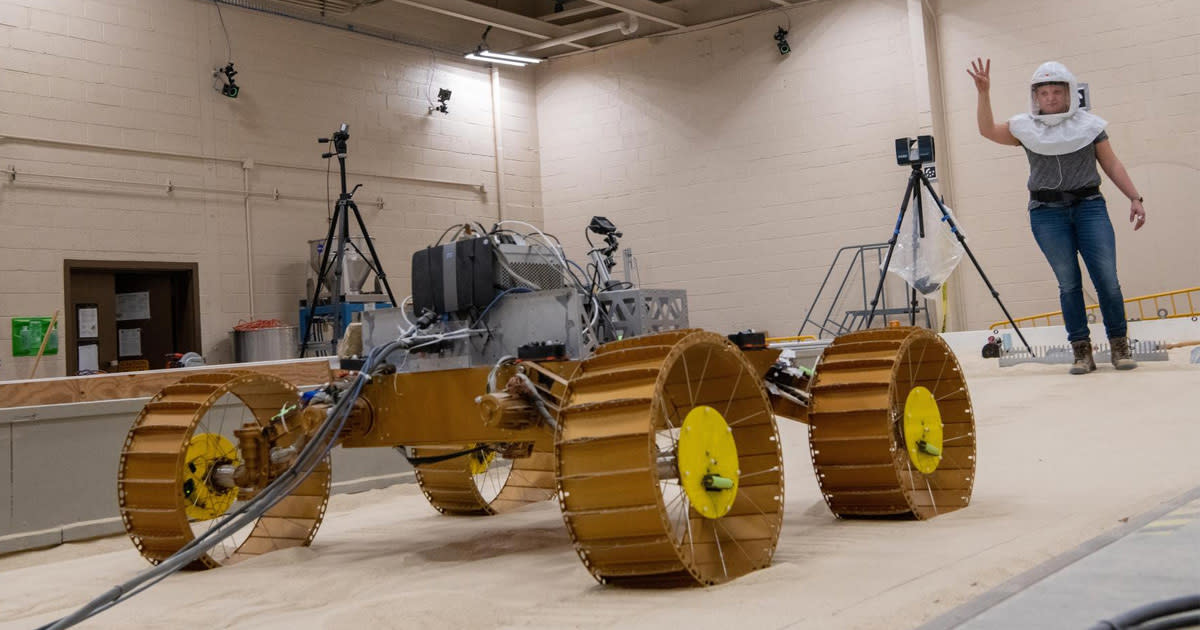NASA Scrapping Finished $450 Million Moon Rover, Will Send Dead Weight "Simulator" to Moon in Its Place

NASA's $450 million lunar explorer, the Volatiles Investigating Polar Exploration Rover (VIPER), will not be going to the Moon. Something else will be taking its place, though — and given the costs involved, the decision is bound to raise a few eyebrows, if not serious questions about the space agency's budget situation.
The rover, which is already fully built, was originally going to be stowed aboard a lunar lander called Griffin, which was developed by the private firm Astrobotic for another $323 million.
Griffin will still go to the Moon. But instead of taking VIPER, the lander will lug along a "mass simulator" in its place — a jargony way of saying that NASA is swapping VIPER out with a nonfunctioning hunk of material that weighs the rover's roughly 950 pounds.
To sum it up, borrowing from Scientific American's reporting: "if VIPER fails to fly, the agency will have spent about $800 million to send literal deadweight to the Moon instead."
When the space agency announced its decision to cancel VIPER's mission last week, it came as a huge shock to space scientists. The rover was anticipated to gather groundbreaking data on water ice beneath the lunar surface at the Moon's underexplored South Pole, providing key groundwork that could prepare for the arrival of crewed missions in the future.
Now, all that VIPER is slated to do is to be scrapped for parts.
NASA argued it had no choice in the decision. VIPER's costs had already ballooned, and though the rover was fully built, it wasn't fully tested. Conducting further tests to prove it was spaceworthy was expected to bring expenses past the $600 million mark — and that's assuming the rover passed them without any serious issues.
The agency feared that if it didn't pull the plug, the costs would eat into the budget of other lunar missions.
"This is a tough and disappointing decision — we all know that — which we had to make in an uncertain and constrained budget environment," Joel Kearns, NASA deputy associate administrator for exploration, said in a presentation this week, per SciAm. "But we do believe that this is the way for us to continue to support a portfolio of lunar science and our dedication to studying the Moon."
It's worth pointing out that NASA has been slammed by federal budget cuts. This year, it was allocated some $2.3 billion short of what it was hoping for: a seven percent budget increase from 2023 that would give it a total of $27.2 billion.
Rather than getting seven percent more, NASA got two percent less, and it's now stuck with a $24.8 billion budget. That resulted in layoffs and belt-tightening across a number of programs. And it's likely that the budget situation won't improve next year, leaving the fate of ambitious efforts like the Mars Sample Return mission in limbo.
With all that in mind, the agency's frugality is understandable. But nixing the already-built VIPER at the last minute in favor of a mass simulator is undeniably a bad look — bad enough that it has scientists begging Congress to reverse NASA's decision.
More on the Moon: Scientists Detect Huge Caverns Under Surface of Moon

